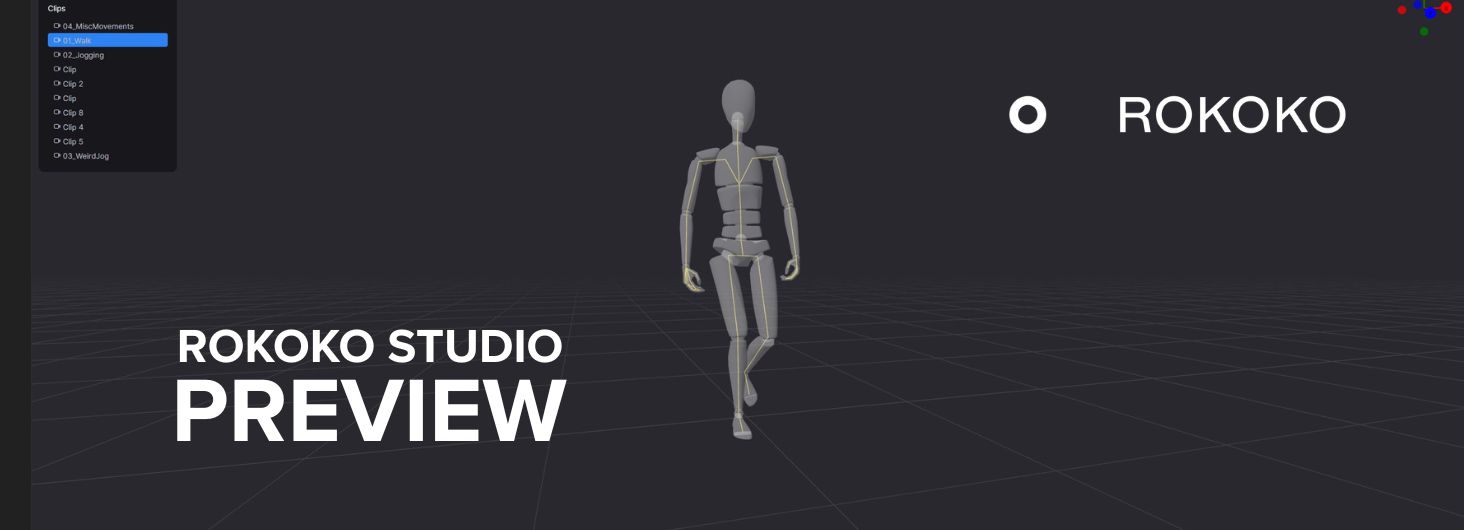-min.jpg)
Xsens vs Rokoko: Honest Motion Capture Comparison for Creators (2025 Guide)
When evaluating professional-quality inertial (IMU) motion capture systems, two names stand out: Xsens and Rokoko. Both offer IMU-based full body tracking technology, but their strategies, pricing and product ecosystems are very different.
In this post, we’ll break down the key differences so you can decide which solution is right for your workflow - whether you’re an indie creator, small studio, or AAA production team.
Pricing: The elephant in the room
Xsens pricing
One of the biggest concerns among creators using Xsens Animate (Link or Awinda) is cost.
- High upfront hardware prices.
- Mandatory software subscription: In 2024, Xsens increased fees significantly, with some users reporting $500–$800+ USD per month just to keep using the Animate software.
- Community backlash: These price hikes rolled out with little warning, leading to frustration among creators.
Rokoko pricing
By contrast, Rokoko takes a creator-first approach:
- No mandatory subscription to use the hardware.
- Free tier for basic FBX exports.
- Affordable plans: Rokoko Studio Plus ($20/month) and Pro ($50/month).
- You’re never locked out of your hardware if you pause your plan.
This predictability and flexibility makes Rokoko a safer investment for indie teams, freelancers, and budget-conscious studios.
Ecosystem: All-in-one vs patchwork
Xsens focuses solely on body motion capture. If you want finger tracking, you’ll need to buy third-party gloves from Manus or similar providers. Face capture? That’s another integration, possibly with Faceware or another expensive alternative. It’s a fragmented experience.
Rokoko offers an integrated solution:
- Smartsuit Pro II for body
- Smartgloves for fingers and hands
- Headcam or Headrig for facial animation
All of these are supported natively inside Rokoko Studio, with one-click export or streaming into tools like Unity, Unreal, Blender, and Maya.
No adapters. No forced plugins. One ecosystem.
Innovation: Speed vs stagnation
Xsens has built a reputation for body tracking stability, but they haven’t introduced meaningful product updates or ecosystem expansions in years. Meanwhile, competitors are rapidly evolving.
Rokoko is constantly pushing new updates and products across the ecosystem. Here are some notable releases from within the last years:
- Coil Pro - an entirely novel way of doing motion capture, added to Rokoko’s product line to solve the biggest issue with IMU mocap (drift)
- Rokoko Vision - a new capture product direction within computer vision AI mocap - both monocular (including file upload) and multi-cam.
- Headcam - the optimal HMC for Unreal’s MetaHuman Animator single-cam (monocular)
- Headrig - the best-in-class mount for iPhone face capture with ARKit.
- Multiple new editing features in Rokoko Studio Preview, including a smoothing filter and loopable segments feature.
For creators looking to stay on the edge of new capture workflows - or future-proof their toolchain - Rokoko’s pace of innovation offers confidence that the platform will evolve alongside your needs.
Support and creator focus
Xsens’ customer base has traditionally been large studios and research institutions. Rokoko was built with individual creators and small teams in mind. That means:
- More affordable pricing
- Easier onboarding
- Fast, human support
- A strong community of animators, indie devs, and VTubers
- Regular product updates, and best practice tutorials on Rokoko's own YouTube channel
We don’t expect users to have a full tech ops team just to make a motion capture setup work.
Feature-by-feature comparison
Final thoughts: Which motion capture system is right for you?
If you’re part of a large VFX pipeline with AAA quality needs and a budget to match, Xsens may still fit your needs.
But if you’re a creator who wants body, hand, and face capture in one system, with transparent pricing and a platform that evolves quickly, Rokoko may be the better choice - not just today, but for where the industry is headed.
Frequently asked questions
Is Rokoko as accurate as Xsens?
Xsens generally yields higher precision and smoother tracking with less post-processing needed.
Rokoko offers strong value and ease-of-use, especially for indie creators, but may require additional cleanup - particularly for complex movements or foot tracking.
How do the subscription and pricing models differ between Rokoko and Xsens?
Xsens often requires a mandatory, expensive software subscription, sometimes ranging in the hundreds per month. This can be a budget constraint for smaller users.
Rokoko offers a free tier and affordable paid plans (Plus, Pro) - without locking you out of hardware, even if you pause your subscription.
How is hand tracking handled in Xsens vs Rokoko?
Xsens typically relies on third-party solutions (like Manus gloves) for finger tracking, making integration more fragmented.
Rokoko includes native Smartgloves, offering a seamless and integrated approach for hand and finger capture.
Can Rokoko be used in environments with magnetic interference?
Rokoko is more sensitive to magnetic fields than some optical or higher-priced systems. For stable performance in such environments, Xsens - with its more robust filtering - may provide more reliable results.
Which system is better suited for solo indie creators or small teams?
If budget, flexibility, and ease of use are your top priorities, Rokoko is a powerful solution for solo creators and small teams. Xsens, while offering higher quality, is better suited to studios with large budgets and less tolerance for cleanup workflows.
Read more inspiring stories
Book a personal demonstration
Schedule a free personal Zoom demo with our team, we'll show you how our mocap tools work and answer all your questions.
Product Specialists Francesco and Paulina host Zoom demos from the Copenhagen office









